Inflation Result Of Mismanagement, Not US Sanctions - Iran Lawmaker
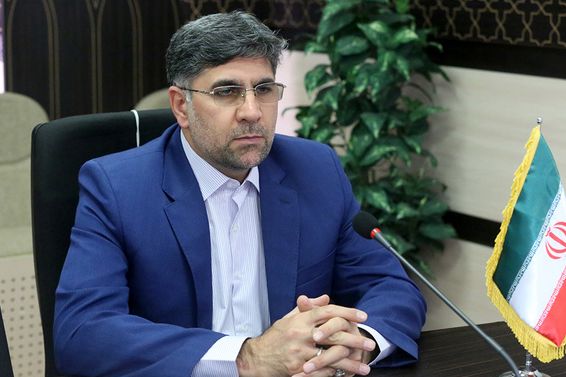
An Iranian lawmaker says high prices for food has nothing to do with the United States’ sanctions but are a result of incompetent managers in the country.

An Iranian lawmaker says high prices for food has nothing to do with the United States’ sanctions but are a result of incompetent managers in the country.
In an interview with ILNA published on Sunday, Shahriar Haydari, a member of the parliament's National Security and Foreign Policy Committee, said economic problems and high inflation are not related to foreign countries, but are due to a lack of integrated management system.
He added the increase in the price of eggs, yogurt, buttermilk and meat has nothing to do with the United States and sanctions, noting that the current situation in the country and the effects of sanctions are two separate issues.
“To say that sanctions are ineffective in some respects may be wrong, but the current state of economic turmoil, high inflation, disorganized resource management indicates a management completely in disarray”, Haydari said.
Further criticizing the management of resources, he said, “One of the main problems of our country is the lack of resource management, not the lack of resources, because we have a lot of resources, but we do not have proper management”.
Food prices are rising in Iran with retailers saying supplies have decreased, while officials insist there is plenty of stored sugar, oil and other necessities.
Prices for most essential goods are nominally fixed by the government, but the private sector often disregards the guidelines based on supply and demand. Many complain to the media that merchants inflate prices perhaps with the help of government bureaucrats and politicians.
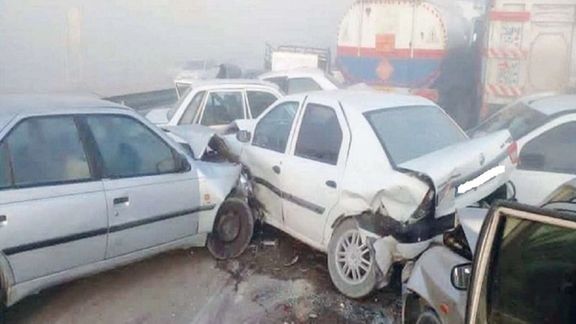
Parliament speaker Mohammad Bagher Ghalibaf has criticized the quality of Iranian cars and called for more imported vehicles.
In a parliamentary discussion Saturday, Ghalibaf said that “a car with good quality can be imported” for $5,000 whereas the Iranian version of a Kia Pride, the cheapest and most popular car on the market, costs about around $8,000 (2 billion rials). But it is the parliament and the government, controlling foreign currency, who have not approved additional car imports.
Since the United States introduced ‘maximum pressure’ sanctions in 2018, threatening third parties dealing with the Iranian financial sector, Iran has struggled with imports, while European carmakers in joint projects have withdrawn.
Iranian automakers are also quasi-governmental companies, benefitting from favorable borrowing and lack of competition. Some media in Iran have speculated that this vested interest might have a role in blocking approval for imports.
Parliamentarian Ali Babai Karnami bemoaned an “unrestrained situation” in the car industry. “Who is responsible for the rising car prices?” he asked. “What does the industry ministry do? Shouldn't the parliament monitor [the market]?..The situation of the car market is unbearable and has also had a detrimental effect on the prices of basic goods.”
Earlier in the month, the deputy head of Iran's traffic police Teymour Hosseini claimed domestically-made cars were more liable to fatal accidents and blamed their low quality on a monopoly held by Iranian automakers.

Another member of the Democratic Party has criticized the Biden administration for handling the threat posed by Iran, saying the 2015 nuclear agreement, JCPOA, is not an Iran policy.
Florida Congressman Ted Deutch said that “Iran threatens our allies and partners, and the IRGC funds proxies across the region while pursuing nuclear weapons”.
“Deal or not, we need a comprehensive strategy to lead in combating threats and to ensure Iran never has nukes”, he added, noting that he is glad that Secretary of State Antony Blinken affirmed that.
During a Foreign Relations Committee hearing on Tuesday, Senators from both sides of the aisle told Blinken to walk away from the talks with Iran.
But Democratic Senator Chris Murphy said Thursday that all the measures the United States has taken against Iran have only accelerated the country’s nuclear program.
The Connecticut senator, a supporter of JCPOA. said in a tweet on Thursday that “We tried crippling unilateral sanctions. We tried assassinations and sabotage. All that did was expedite their research program.”
The Biden administration has been holding talks for more than a year with Iran to revive the 2015 nuclear agreement, but the diplomatic process is at a standstill since March. Iran is demanding the removal of its Revolutionary Guard from the US list of terrorist organizations, something the administration has so far not accepted.
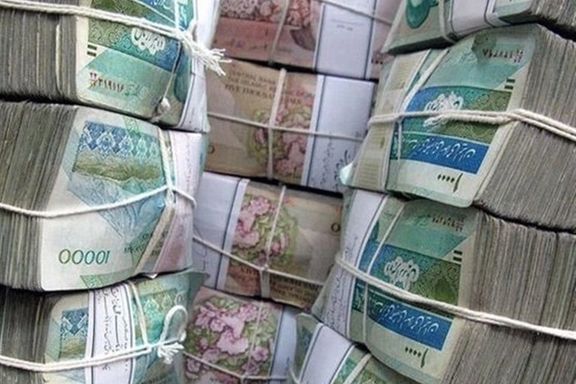
Iranian government debts have soared since 2018, when the US imposed tough sanctions on the Islamic Republic, International Monetary Fund’s figures show.
According to IMF’s Middle East and Central Asia economic outlook report, Iranian government’s net debt equaled to 41.5% of nominal GDP or $591 billion (based on official USD rate at 42,000 rials) in 2021. It was only $45 billion during 2000-2018 on average, or 11.8% of nominal GDP. The figure reached $214 billion in 2019 and increased to $351 billion in 2020.
During last three years only 70% of government’s annual budget has been realized due to US sanctions and plunging oil exports. Therefore, the government had to borrow a huge amount of money from the Central Bank, The National Development Fund and other internal financial entities to compensate the budget deficit.
Last year, the Supreme Audit Court of Iran announced that the government’s net debts reached 10,000 trillion (10 quadrillion) rials by May 2021, which equals $238 billion based on official USD rate or $37.5 billion based on USD rate in open markets (1 USD: 26,500 rial).
The Supreme Audit Court hasn’t released a new report, but last year it warned that government debt is increasing rapidly, rising 72% only during March-May 2021.
The heavy borrowing from the central bank leads to priniting money and a dangerous rise in liquidity since 2017, which in turn fuels inflation currently standing at more than 40 percent.
Iranian government spokesman Ali Bahadori Jahromi said on April 19 that export revenues, especially from oil shipments, have substantially increased, but the government had to allocate 100 trillion rials per month to pay off mature debts.
IMF put the country’s total exports (oil, non-oil and service) at $54 billion in 2020, but the figure increased to $91 billion in 2021 and expected to reach $140 billion during the current year.
IMF also predicted that the government’s net debts remain unchanged in 2022. International organizations to a large extent have to rely on official figures issued by Iran, as they have no representatives on the ground and do not visit the country.
Iran’s oil and gas condensate export declined from 2.5 million barrels per day (mb/d) in 2018 to 320,000 b/d in 2020 due to the US sanctions, but increased to around 670,000 b/d during last year, according Kpler data intelligence firm. The oil price has also been increasing from $41 in 2020 to above $100 now.
The Wall Street Journal reported on April 28 that Iran’s oil exports rose to 870,000 barrels a day in the first three months of 2022, up 30% from an average of 668,000 barrels a day in 2021, according to Kpler’s estimates.
Iran also exports around 450,000 b/d of petroleum products, which remained unchanged during last years, while oil products prices have also dramatically increased since 2018.
On the other hand, Iranian custom statistics indicate that the value of Iran’s non-oil exports increased by 41% to $48 billion during last fiscal year, ending March 20, due to significantly higher prices for petrochemicals and mine products.

Iran’s anti-riot police cracked down on people peacefully protesting unsanitary dumping of waste at a local landfill in northern Iran.
A group of residents of the village of Saravan in Iran’s northern Gilan province started a peaceful protest on Thursday, but after police intervention, protesters began throwing stones. Five officers were injured and several protesters arrested.
According to videos circulating inthe socialmedia police used guns and teargas during the clashes.
Furious at the failure of the local authorities to close the gigantic waste landfill, people had been blocking the entrance of the garbage dump for more than two weeks to stop trash trucks from reaching the site.
Piles of stinking rubbish at the Saravan site now tower some 90 meters (295 feet) high, and according to estimates the volume of the waste exceeds one million tons while about a thousand tons is added to it daily.
Waste from the provincial capital Rasht and seven other cities has been dumped there for nearly four decades.
Protesters say the landfill, reportedly due to close next year, is causing diseases and health problems, and demand the site be closed immediately.
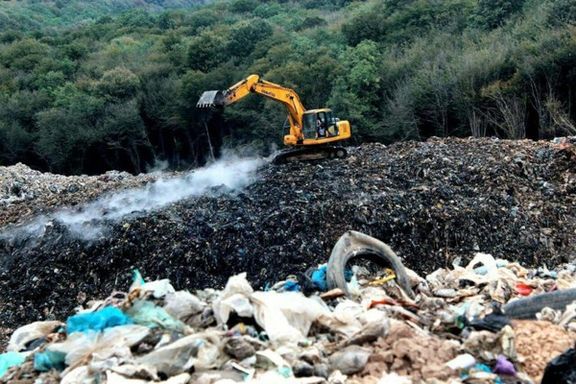
According to reports, officials have been promising to solve this problem for years but none of their pledges have been fulfilled so far.
The spokesman for Gilan province's waste management office, Javad Shafi'i, told the state broadcaster that some $4 million had been allocated to resolve the issue, including funding a "fertilizer and incinerator plant".
A report by Tehran Times newspaper said that poor waste management is causing environmental damage of around $1.7 billion annually.
Recently, Iran has seen several demonstrations over government mismanagement of environmental issues like the country's water crisis or building factories in natural heritage sites.
Earlier in April, a group of residents held a protest rally in southwest Iran against a project to transfer water out of Chaharmahal-Bakhtiari province, causing water scarcity in their region.
During the protest in the provincial capital of Shahrekord, people carried placards and chanted slogans threatening to take up arms against the ‘mafia’ behind the redistribution project.
Chaharmahal-Bakhtiari, a traditionally water-rich region in the Zagros mountains, has seen its water resources decline due to both drought and projects to irrigate other arid regions.
Iran has been suffering from drought for at least a decade and this year officials have been warning of a further decrease in precipitation.
Moreover, controversy over an environmentally dangerous petrochemical project continues in Iran as some government officials have defended it despite an earlier ban.
The petrochemical plant in Miankaleh, northern Iran is planned to be built next to a nature reserve, which galvanized opposition by activists and citizens in the past few weeks. President Ebrahim Raisi came out against the project earlier this month and Iran’s Judiciary issued an order to stop construction until further studies.
However, the governor of Mazandaran province and the Friday Prayer Imam of the region strongly defended the project. The government of former president Hassan Rouhani in an apparently hasty move approved the petrochemical project last year and it obtained the oil ministry’s permission in an unusually fast-tracked manner.
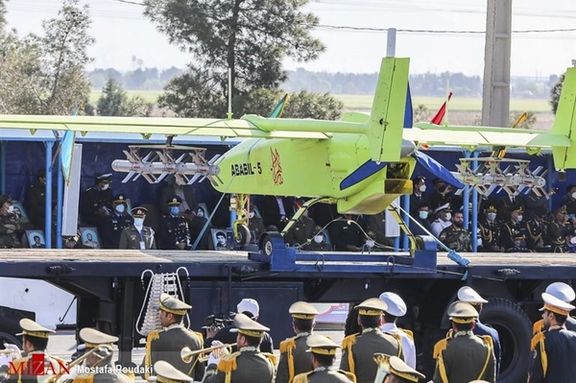
The United States House of Representatives passed legislation Wednesday requiring the president to sanction persons and entities over Iran's drone program.
The Stop Iranian Drones Act (SIDA), approved 424 against two, requires approval from the Senate and a presidential signature to become law.
The lawmakers behind the proposed legislation say it clarifies that US sanctions on Iran’s conventional weapons program under CAATSA include the supply, sale or of drones to and from Iran.
Farzin Nadimi, defense and security analyst in Washington DC, told Iran International Thursday that SIDA was mainly aimed at putting pressure on Iranian institutions and companies importing equipment and technologies used in building drones (unmanned aerial vehicles (UAVs). Nadimi claimed the legislation would help Washington prevent further development of Tehran's indigenous UAV industry.
Supporters of the legislation, including Congresswoman Elise Stefanik, say it will stop Iran or Iranian allies acquiring combat drones that could be used against US troops or US allies. Attacks by Iranian drones and the export of Iran’s drone technology pose a dire threat, SIDA supporters argue.
Alleging that Iran is "the world's leading exporter of terrorism," Stefanik said the world should know the United States will "use every tool at its disposal to cut off Iran’s access to deadly weapons.”
"Time and again, Iran has used UAVs to threaten global stability and US interests," Republican congressman Ted Deutch tweeted after the bipartisan bill passed the House. . “Congress countered this destabilizing behavior today.”
Important timing
Hossein Alizadeh, London-based international affairs analyst in London, told Iran International that the legislation’s timing was important in potentially adding new sanctions while negotiations to restore the 2015 nuclear deal are paused.
Iran's drone technology has already been transferred to some of its proxies, including to the Houthis in Yemen but the legislation shows that Republicans and Democrats are determined to prevent the expansion of Iran's military programs, he said.
Iran’s military drone program has expanded in recent years and UAV’s have been more frequently used in attacks in both on land and at sea. Several attacks in Iraq and at least one attack in Syria have targeted US forces.
SIDA was introduced at the US Senate Foreign Relations Committee December 2021, when a statement by the committee said it sought to amend the Countering America’s Adversaries Through Sanctions Act (CAATSA) to include as sanctionable any action intended to advance Iran’s UAV program.
“Iran’s UAV proliferation continues to threaten the US. and our allies throughout the Middle East. Whether the attack is launched by Iran, the Houthis, Iran-backed militia groups or any other Iran-sponsored entities, these attacks are intolerable,” Rep. Michael McCaul, one of the two Republican lawmakers who proposed the legislation, said after the legislation passed the House Foreign Affairs Committee in December.
Iranian officials have not commented on the proposed legislation. Admiral Mohammad Mousavi said early November that Iran's drones − some of which, including the ‘suicide drone’ Arash − had a range above 2,000km, further than Iran’s missiles. Mousavi told Sobh-e No daily that such drones could evade defense systems like Israel’s Iron Dome, although Saudi Arabia, the US, Iran, Israel, the Houthis, and Hezbollah have all downed UAVs.